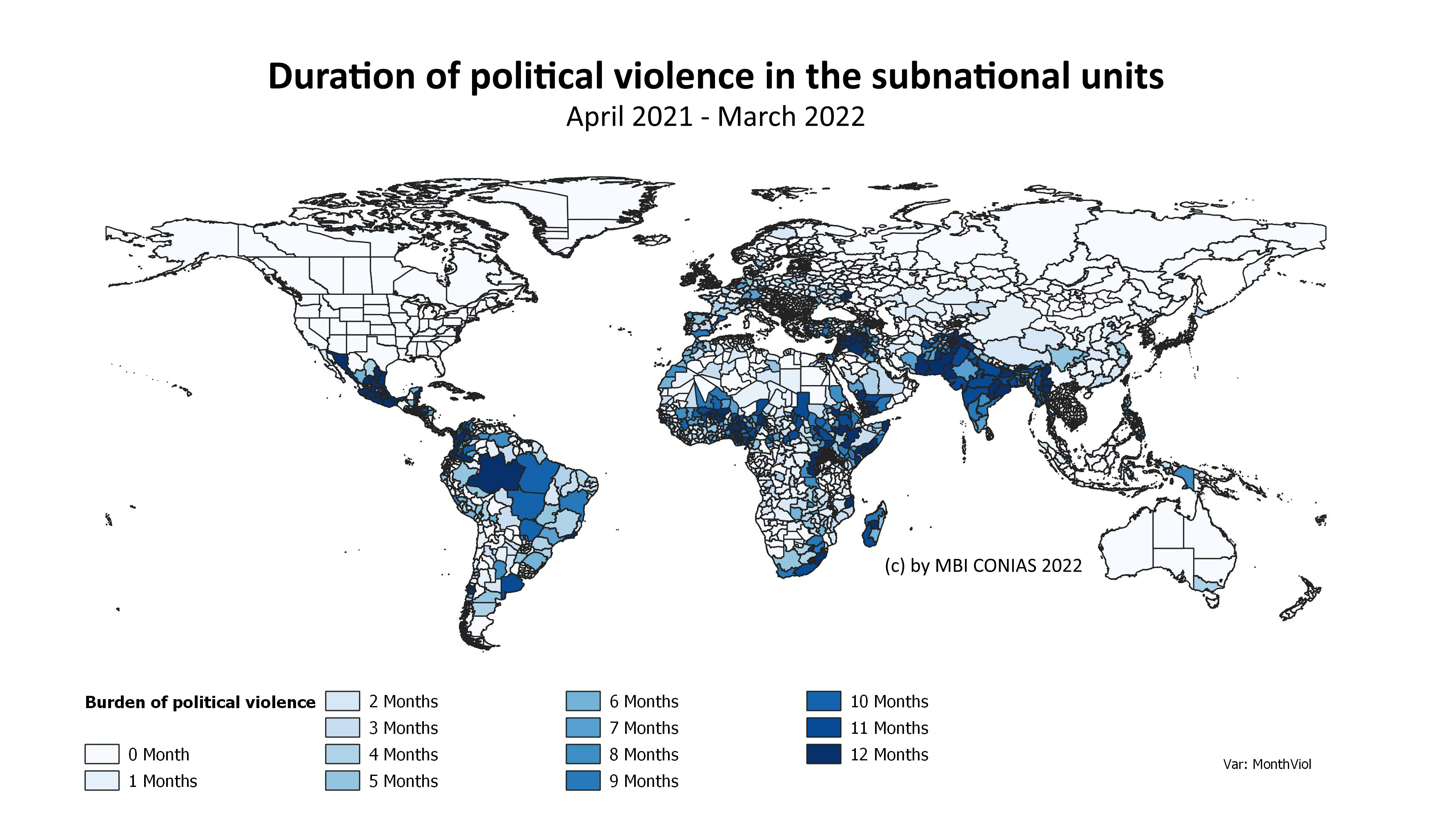Political risk analysis always includes a snapshot of the current situation: What is the current state, is there political violence, and if so, how severe is it? However, this is only the first step in learning about the political risks of a region and later being able to analyze their impact on the company's own production, supply chain or reputation.
One of the many other measures is to look at the conflict history of the region – and the country – in question. Is the political violence that could be observed in the last month (see first step) an exceptional situation for the region or rather typical? In order to examine that, the CONIAS conflict database offers various options for presenting and analyzing the region's conflict history.

The figure above shows an evaluation for the last twelve months: The more months in the last year were marked by violent conflicts, the deeper the shade of blue. A lot of violence within the last twelve months indicates that the region currently lacks resilience. This means that there is little to no political capacity to redirect the impulse of political violence into peaceful channels. In this case, for example, work trips by company employees could pose an unwanted risk. In addition, frequent outbreaks of violence could be a sign that transportation infrastructure is no longer fully available – either as a result of the attacks themselves or because of subsequent actions such as road controls that cause traffic jams. However, a review of the historical environment may also lead to the conclusion that, despite currently serious events, there is no need to fear further risk in the future.
An example for illustration: In 2017, the G20 Summit, a meeting of the leaders and representatives of the world's 20 most important industrialized countries, took place in Hamburg on July 7 and 8. On this occasion and in this context, there were violent protests with several hundred injured, stores destroyed and a large number of cars burned down[1]. TV stations around the world broadcast images that gave the impression of a city close to civil war. In fact, however, the political violence in Hamburg this year was essentially limited to the time of the G20 Summit. Thus, escalating violence was the exception, not the rule.
To learn more about political risk analysis, contact us or sign up for our upcoming MBI CONIAS Academy for political risk.
A twelve-month retrospective is not always sufficient to determine a region's susceptibility to violence. CONIAS analyses show that violence from months further back in time can also return, which is why values from the more distant past can be obtained if desired. One example is our MonthViolent60 indicator, which shows the number of violent months over the past five years, listed separately for each year.
About the author:
Dr. Nicolas Schwank
CONIAS Risk Intelligence
Michael Bauer International GmbH
Sources:
[1] https://www.spiegel.de/politik/deutschland/g20-gipfel-in-hamburg-wer-ist-schuld-an-der-gewalt-a-1158698.html; https://www.eurotopics.net/en/182233/g20-summit-overshadowed-by-violence; https://www.theguardian.com/world/2017/jul/08/hamburg-counts-cost-two-nights-of-violence-looting-destruction


